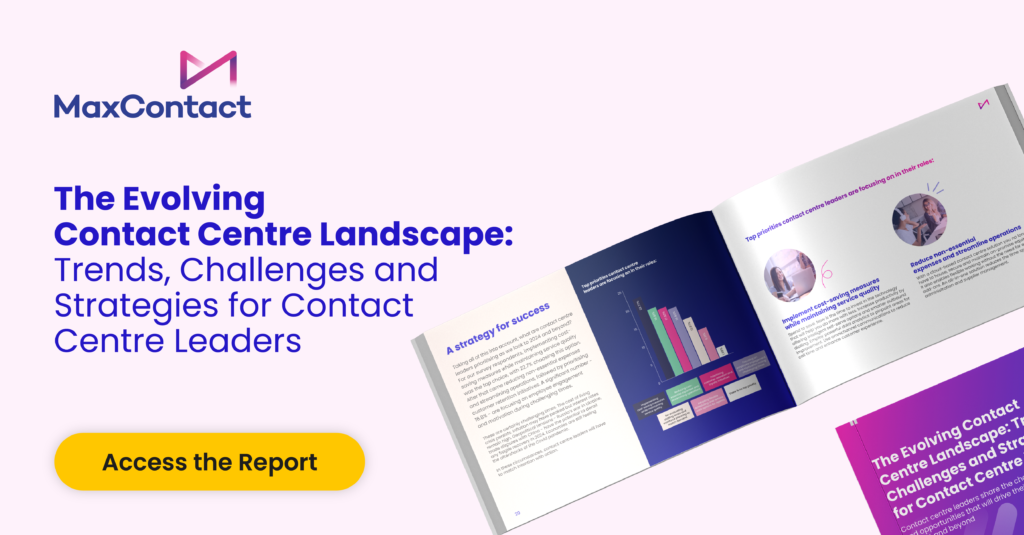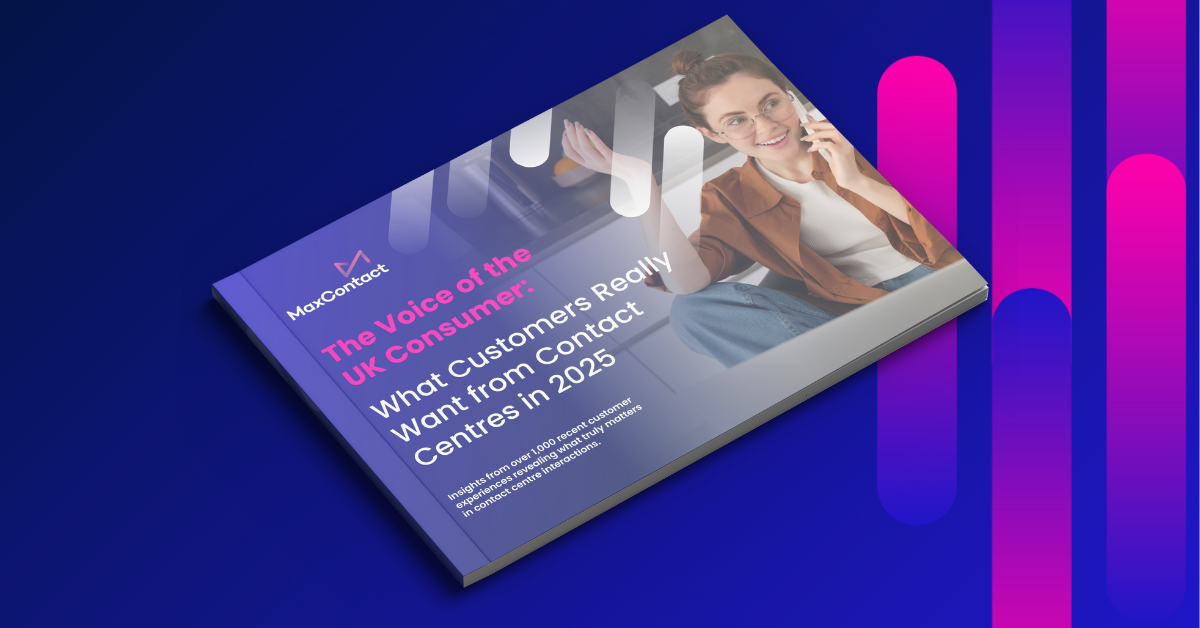Contents
In August 2023, MaxContact conducted some in-depth research into the current state of the contact centre industry. We quizzed over 100 contact centre leaders on the trends and challenges that will drive their strategies in 2024 and beyond.
The research uncovered lots of interesting and useful information. You can download the full report – The Evolving Contact Centre Landscape – for free here.
At its core, the research reveals something of a dilemma. In difficult times, contact centre leaders need to do two seemingly contradictory things. They need to cut costs, and at the same time enhance customer service.
It’s a tough ask, because dropping the ball on either side of that equation could prove costly, even catastrophic. Since the pandemic, customer experience has become even more of a priority for organisations of all kinds. At the same time, many businesses are looking to streamline to meet the challenges of the current macroeconomic climate.
With those opposing pressures, how will contact centre leaders square the circle of doing more with less? That’s what the rest of the study aimed to find out.

Priorities for contact centre leaders
In our research, enhancing customer experience was the top area of focus for contact centre leaders in the next six months. It was followed by optimising contact centre budget and cost management, improving agent performance and implementing new technologies.
Although on the surface these priorities appear contradictory – in effect, contact centres are being told to do more with less, or at least do more but with a strong handle on costs – there is some logic here.
A tight focus on improving productivity and implementing top tier technology can improve customer satisfaction. Although there are some costs associated with both, well trained and confident agents, supported by (for example) IVR and automatic payments, quickly bring cost-efficiencies to call centres, and at the same time impress customers.
The need to measure progress
Respondents to our survey understood that it was not enough to just say they were prioritising customer satisfaction or cost control. They had to measure progress and show results.
When we asked them about the most important numbers to track, Net Promoter Score (NPS) and customer satisfaction (CSAT) came out on top.
That’s no surprise, given the focus on customer experience mentioned earlier. The good news is that other metrics were rated almost as highly, whether Customer Effort (CES), Average Handling Times (AHT) or First-contact resolution (FCR). Contact centre leaders are intent on measuring the metrics of success, and understand that these KPIs are complementary – a focus on FCR, for instance, feeds into AHT, CES and ultimately NPS.

AI in contact centres
AI is everywhere at the moment, and we wanted to ask contact centre leaders about its impact. Could it help improve the metrics mentioned above? Could it help meet the challenge of greater cost-efficiency alongside enhanced customer satisfaction?
To some extent it already is. Less than 9% of our leaders said AI was yet to impact their role at all. Of the others, nearly a quarter (24.75%) said it was impacting efforts to balance contact centre performance with cost efficiency. In addition, nearly 22% of respondents said AI was encouraging a customer-centric culture across the organisation, and the same number said it was enabling better customer service and driving innovation and digital transformation.
Again, this feels like good news as contact centre leaders struggle with the twin priorities of cost cutting and customer experience. Current AI tools like enhanced chatbots and speech analytics are already reducing pressure on staff and freeing them up to focus on more complex or sensitive customer interactions. They’re simultaneously providing meaningful insight that can be used to create more personalised customer experiences, and improving contact centre efficiency.
Once again, it seems likely that technology is the secret to more productive, more efficient and more customer-centric contact centres, and the AI revolution has only just begun.

The contact centre in context
Of course, the contact centre may only be one part of a business, and it just happens to be the one that customers interact with on a daily basis. That means it plays a crucial role in helping organisations meet their wider goals.
When we asked specifically about the challenges contact centre leaders face in aligning contact centre operations with the overall needs of the business, balancing performance with cost efficiency came top, with nearly a quarter of respondents (24.75%) choosing this option.
Nearly as many (23.76%) chose ‘encouraging a customer-centric culture across the organisation’ and a significant number (22.77%) chose ‘ensuring seamless communications and collaboration across departments.
In other words, contact centre leaders appear all too aware of their responsibilities to the wider business. They understand that part of their role is to feed valuable customer information back into the organisation, so that customer-first strategies can permeate every department and team. They know they have to achieve this in a cost-effective way. Nevertheless, they realise that as the most customer-facing part of an organisation, contact centres need to lead in this respect.

Contact centre strategy for 2024 and beyond: what it all adds up to
So what does all this mean for overall contact centre strategy as we near the end of 2023? For the largest number of our respondents (22.77%), it means their top priority is implementing cost-saving measures while maintaining service quality.
For others (18.81%) it is reducing non-essential expenses and streamlining operations, while for 17.82% of respondents, the priority is customer retention and loyalty initiatives.
These results are consistent with everything we’ve already discussed. The focus for at least the next 12 months will be implementing systems and processes that save money and also keep customers happy. These systems will also allow for high levels of data analysis, giving contact centre leaders valuable insight into everything from customer satisfaction to campaign performance. As previously mentioned, that’s a tough ask, but through a commitment to new technology and agent productivity, it’s one that contact centre leaders can achieve.

There are more details on what contact centre leaders are doing to meet the challenges of these uncertain times in our full report. Download it for free now.





